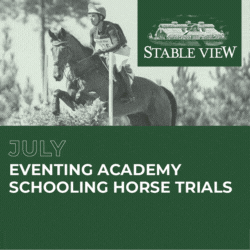
Ema Klugman & Bronte Beach Z. Photo by Abby Powell.
People say that there is always more to learn about horses. Just when you think you have it figured out, whether that’s riding a particular movement in dressage or honing your eye over jumps, you realize that you don’t. It can be frustrating and confusing. The horse should understand what to do because you’re explaining it right. Or at least you think you are.
But every horse has their language, and as they develop and progress new problems often pop up just when you think that you’ve conquered the old ones. Corrected the right drift? Now you’ve lost the rideability. Improved the impulsion? Now you’ve lost some straightness. It can feel like playing whack-a-mole. But that’s the joy of training horses—there’s always a new problem to solve. Even the best riders admit that they are still making mistakes, often daily, and learning from those mistakes. The horses teach us.
I think it’s interesting to consider the riders we admire and how they came to be the way they are. How did they develop their style, their timing, their balance? Which horses taught them those skills? Did they learn what to do by doing it right or (probably more often) what not to do by doing it wrong?
I recently read the memoir Educated by Tara Westover. It is a story of growing up, of abuse, and ultimately a story about the power of education. Over the next few articles I write, I will be drawing from some of her insights in the memoir (which I highly recommend). At one point, she writes, “it was only as I grew older that I wondered if how I had started is how I would end—if the first shape a person takes is their only true shape.” As a child, Westover had basically resigned herself to the life that her family chose for her. Education helped her imagine a different future.
And she definitely built one. Westover’s life changed immeasurably over the course of 10 years—she went from never attending school to doing a PhD at Cambridge. Though her story is exceptional, the lessons from it apply to all of us. It is easy to believe that how we started is how we end, that the first shape we take is our only true shape. I often hear this sentiment among students, whether about themselves or their horses—“I have never been able to see a distance” or “he always rushes at the end of the course.” But the whole point of training and of education is to overcome these problems. Adopting a defeatist attitude is the first step in blocking your way to solving them.
The whole point of learning is to try on different ideas and figure out which ones fit. Thinking about education in this way reminds me of a quote I read earlier this semester from Justice Oliver Wendell Holmes: “the young know the rules; the old know the exceptions.” It takes forever, it seems, to learn the rules. But once you’ve got your thumb on those, you begin to learn the exceptions. They appear like the negative space in a painting, and the harder you look, the more you begin to see.
Understanding the rules—and more excitingly, the exceptions to the rules—is hard because it requires us to admit that there is always more to learn. What education means to me is the freedom to keep learning, forever. A couple of weeks ago, when I finished my last exam of the semester, I expected to feel exhausted and daunted by the prospect of doing all of that studying again next semester, and the semester after that, and the one after that…
But instead, I was overcome by a different feeling: I couldn’t wait to do it all again. I wondered what I might learn, what other ideas were out there. What the rules were, and what the exceptions might be. It had been hard, and I had felt inadequate at times. But I felt that I was finding out my true shape.
I guess all that I am saying, in words far less apt than those of Tara Westover, is that learning and growing is a sacred thing. It gives us power and hope. It makes us question, wonder, grapple; it makes us want to debate, to expand, twist, invert, and warp ideas until they fit the mold of what we think they should be. It makes us imagine.
This post originally appeared on Jumper Nation.



















